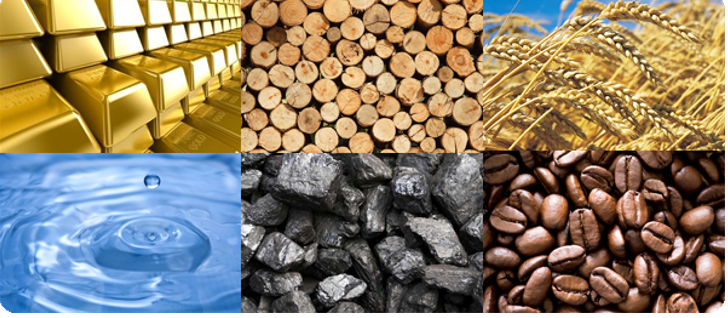World: Ukraine-Russia war, four products exported by the two countries should experience a price increase
With the Russian invasion in Ukraine, the various commodity markets around the world were shaken.
According to several analysts, commodity prices also rose due to supply disruptions caused by the Russian invasion. A situation that has blocked the flow of grain and metals from the region.
Given the strategic role that Russia and Ukraine play in international commodity markets, both are major exporters of commodities such as wheat and grains, petroleum, natural gas, coal, gold and other precious metals.
Below are the main export products from Ukraine and Russia whose distribution was affected by the war.
1. Energy
The world’s third largest oil exporter after the European Union and Saudi Arabia, Russia’s economy is largely dependent on the export of oil and gas.
It should be noted that before the invasion of Ukraine, Russia supplied 1 barrel of oil out of 10 consumed in the world.
With the war and the announcement by the United States, Canada and the United Kingdom to ban imports of Russian energy products, the international oil market is facing its greatest turbulence since the 1970s.
Experts say prices are likely to continue to rise as long as the war lasts, as there are few alternatives to replace Russian exports of around five (5) million barrels per day.
OPEC (Organization of the Petroleum Exporting Countries), of which Russia is not a member, has indicated that it will not be easy to find such alternatives.
Even countries that import few Russian energy products will feel the impact, as prices for fuel sales to wholesalers are likely to rise.
2. Food
Both Russia and Ukraine are major food exporters.
The two countries, known as the “breadbasket of Europe”, account for 29% of global wheat exports and 19% of corn exports, according to data from JP Morgan bank.
Wheat prices in some futures markets have reached 14-year highs.
Ukraine is the world’s largest producer of sunflower oil, and Russia ranks second, according to S&P Global Platts.
Together, they represent 60% of world production.
Wheat and sunflower oil are important raw materials used in many food products.
If harvesting or processing is damaged, or exports are interrupted, importing nations must find ways to replace this supply.
Analysts warn that the war’s impact on grain production could double international wheat prices. This could seriously affect several countries that depend on grain imports from the Black Sea region.
Turkey and Egypt receive nearly 70% of their wheat imports from Russia and Ukraine, which is also China’s main corn supplier.
World Food Program Director David Beasley said rising prices due to the conflict in Ukraine could have a catastrophic impact on poorer nations.
“In Lebanon, about 50% of their grain comes from Ukraine. Yemen, Syria, Tunisia, etc. depend on Ukraine as a grain supplier,” he said.
And to add: “Russia and Ukraine will go from a breadbasket status to that of literally having to share the bread. It’s simply an incredible reversal of reality.
3. Metals
Russia is one of the world’s leading suppliers of metals used in everything from aluminum cans to copper cables and automotive components.
The country is the world’s fourth largest exporter of aluminum and one of the world’s top five producers of steel, nickel, palladium and copper.
Ukraine is also a major supplier and holds a large share of palladium and platinum exports.
For specialists, this means that due to the invasion of Ukraine by Russia, there may be an increase in the prices of canned goods and copper cables.
“We have seen that aluminum and nickel have increased by 30% since the start of the year, and this will ultimately be passed on to consumers when they buy their aluminum beverage cans or when they do renovations in their home and will need copper for their wiring. All these prices enter into general inflationary pressure,” said Matthew Chamberlain, Director of the London Metal Exchange (UK).
Russia remains the third largest gold producer in the world, after Australia and China.
According to data from the World Council, in 2021 the country supplied the world with 350 tons of the precious metal.
In early March, gold hit its highest price since August 2020, trading at over US$2,000 per ounce (one ounce is approximately 28 grams).
In early March, nickel – used in lithium-iron batteries – soared 76%, and palladium – used in catalytic converters in automobiles to reduce gas emissions – reached unprecedented levels.
Any disruption in palladium supply, analysts say, could create serious problems for automakers.
“Russia accounts for 38% of global palladium production. As supply reductions cannot be compensated by other regions, the market risks falling into a considerable supply gap,” Daniel Briesemann, strategist at Commerzbank, told Business Insider.
4. Neon
Ukraine is a major supplier of purified noble gases such as crypton and neon, the latter of which is essential for the manufacture of semiconductors.
According to data from consultancy firm TrendForce, Ukraine accounts for nearly 70% of global exports of purified neon gas, used for lasers that etch patterns in semiconductors.
Over 90% of the neon used by the US chip industry comes from Ukraine. Any change in its supply could exacerbate microchip shortages, which were already a significant problem in 2021.
“As Russia provides more than 40% of the world’s palladium supply and Ukraine produces 70% of the world’s neon supply, we can expect global chip shortages to worsen if the conflict persists,” writes Tim Uy in a recent Moody’s Analytics report.
It is worth remembering that during the 2014-15 war in Ukraine, neon prices increased several times. Which indicates gravity for the semiconductor industry.
Semiconductor companies account for 70% of total neon demand. This is an integral part of the lithography process for the manufacture of chips.
![]()





